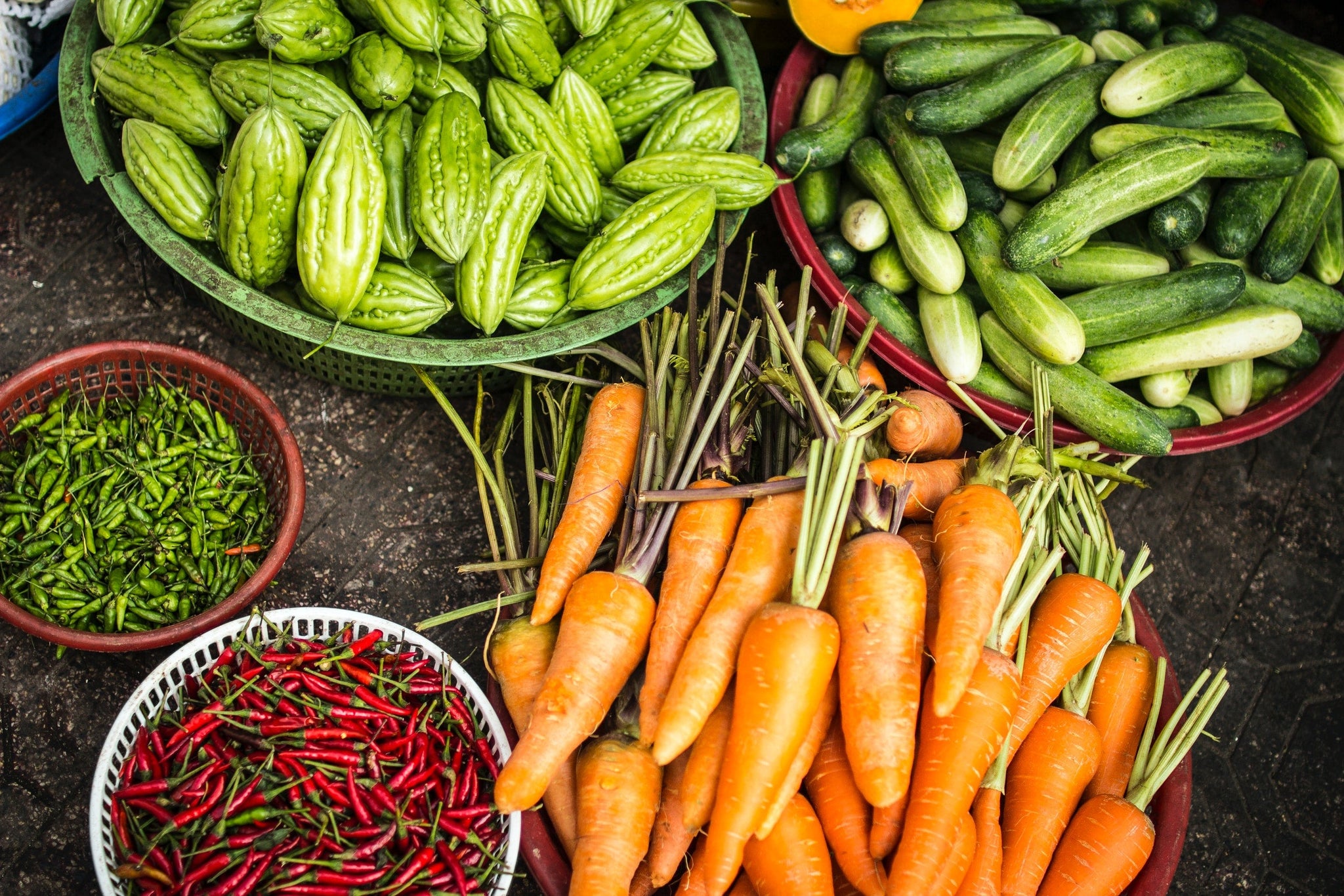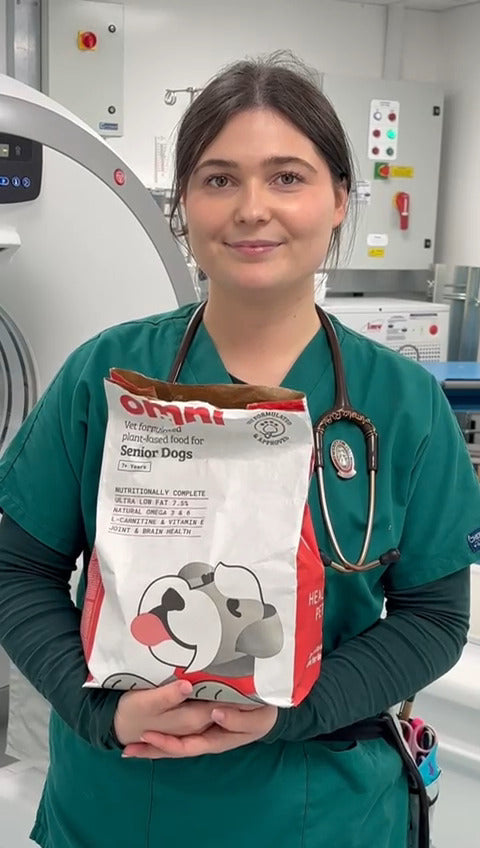Plant based diets found to be healthier and better for the planet

A recently published, peer reviewed paper (March 2023) found that plant based diets were amongst the most environmentally sustainable when compared to other popular diets.
There are a variety of diets and lifestyles out there, often marketed as being better than one another. With so much information available, it’s not easy to understand which is truly the best diet for you (and your dog!). This paper looked into the key criteria of a ‘sustainable diet’ for a human and compared them side by side to see which truly came out on top.
The Key Criteria for a good diet:
- Most beneficial for health
- Minimal negative impact on the environment
- Most affordable and accessible diets, increasing the likelihood of maintaining this lifestyle.
The following 6 popular diets were compared:
- The Paleo Diet: Lean meats, fish, eggs, vegetables and root vegetables, fruits, nuts and seeds. Healthy fats and oils. Excluding processed and sugary foods- cereals, grains, legumes, dairy, coffee, alcohol. This diet aims to recreate the diets of the paleolithic era.
- Mediterranean diet: Plant-based foods, vegetables, legumes, fruits, nuts, seeds, fish, seafood, some dairy and olive oil as the main source of fat. Limited meat intake. This diet is based on the cuisines bordering the Mediterranean sea (e.g. Greek, Italian).
- Ketogenic diet: This diet aims for very low carbohydrate, high fat, moderate protein diet. Fish, meat, eggs, seeds and nuts, high fat dairy products, low starch vegetables.
- Vegetarian diet: Plant based foods and animal derived products (milk, eggs, butter, etc) excluding meat.
- Vegan diet: Plant based diet with the total exclusion of animal derived products.
- WHO (World Health Organization): Diet derived of plants and meat, criteria include 5 portions of vegetables and fruit per day, fat should make up <30% of daily calorie intake, <5g salt per day, sugars should be <10% total calorie intake per day (2).
A 7 day meal plan, of 2000 calories per day (in line with WHO guidelines) was generated for each diet type using the site ‘Eat This Much’. This site is designed to create realistic meal plans for each specific diets. To ensure accuracy and authenticity of the suggested meal plans, the authors checked ingredients and the levels of macronutrients, to ensure they complied with the guidelines of each diet (e.g Ketogenic diet: 10.75% protein, 12.72% fat, 3.76% carbohydrates).
Nutritional Quality:
The nutritional quality of ingredients was measured in this case using the SAIN:LIM method. Simply put, this method calculates the nutritional value of each ingredient and is proposed by the French Food Standard Agency, recognized by WHO, and used across the European union for food labelling.
It found that healthiest diets were those that had the most diversity of ingredients, as well as limited or no red meat and processed meat. The Paleo diet ranked the most nutritional, (as they eliminate processed meats) closely followed by the Vegan diet and then the Mediterranean diet. The SAIN:LIM methodology follows the understanding that high levels of saturated fatty acids, added sugars and high levels of sodium (the 3 unhealthy nutrients measured) increase risks of disease and are linked to various health issues.
Environmental sustainability:
To put it simply- meat based diets had a significantly more negative environmental impact, whilst plant based diets were more environmentally friendly.
4 environmental effects were examined: The levels of greenhouse gas emissions, land use, eutrophication levels (when nutrients drain from land into bodies of water, resulting in overgrowth, disruption and harmful effects to existing wildlife) and water withdrawals. Overall, the meat heavy Ketogenic and WHO diets scored the highest in all categories, closely followed by Paleo.
As a brief example, the Ketogenic diet’s total Greenhouse Gas emissions were 8 times higher than that of a vegan diet, total land use 10 times higher, eutrophication total 6 times higher, and total water withdrawals 1.6 times more.
Contrary to some beliefs that plant based foods are responsible for excessive water and land use, this study clarifies that meat production and livestock rearing requires more physical space than agricultural practices. The amount of water use is not insignificant in fruit, nut and vegetable production – however the values were still less than half of what was required for Ketogenic and Paleo diets.
Affordability:
Cost wise, it seems that following the WHO (World Health Organization) diet is the most expensive when looking at a typical 7 day WHO meal plan aiming for the recommended 2000 calories per day, followed closely by the Paleo diet. The cheapest week of food was the Vegetarian diet, followed by the Vegan.
Whilst this paper focuses on human foods -some of these learnings can also be applied to pet food. We know animals suffer from many of the same diseases as humans (cancer, obesity, diabetes etc), and diet plays a huge role in safeguarding their health. With more than half of the British population being pet guardians, the impact of feeding a meat based diet for 2 meals a day has a huge impact on the environment.
Some people choose a diet for their health benefits. Some for taste. Others for cultural, ethical, environmental or animal welfare reasons. Sometimes it’s a matter of cost of living. Whilst this analysis can’t take into account every person’s circumstance, it’s eye opening to really define what constitutes a ‘good’ diet, and to be able to compare them side by side using quantitative values. It’s certainly worth a thought, and will hopefully help you make your own assessment, to what is the ‘best’ diet.
- https://www.hsph.harvard.edu/nutritionsource/healthy-weight/diet-reviews/paleo-diet/
- https://www.who.int/news-room/fact-sheets/detail/healthy-diet







 85 Great Portland Street, 1st Floor, London, W1W 7LT United Kingdom
85 Great Portland Street, 1st Floor, London, W1W 7LT United Kingdom





